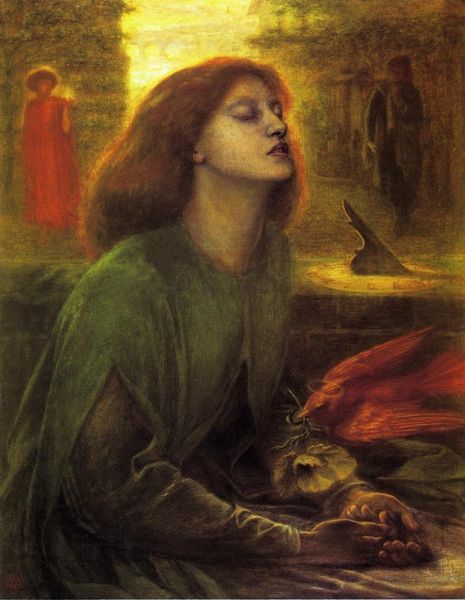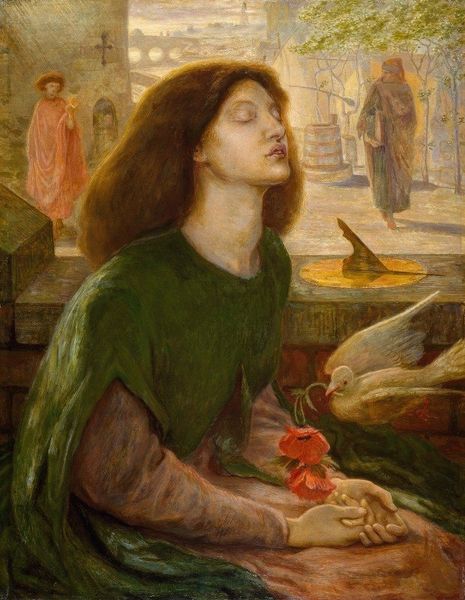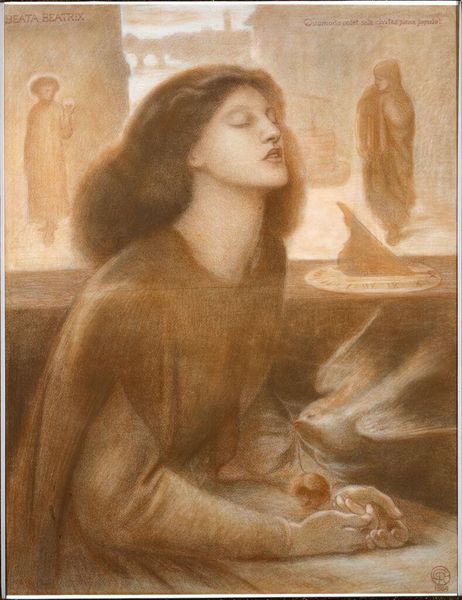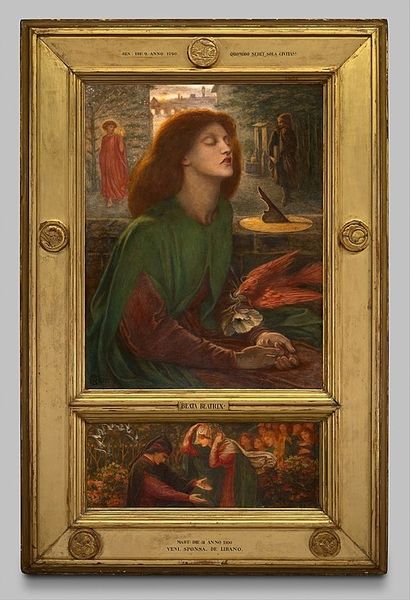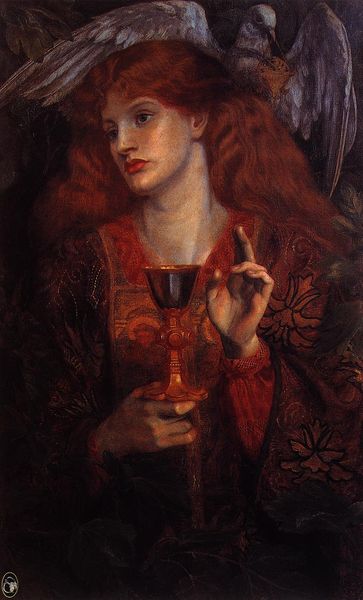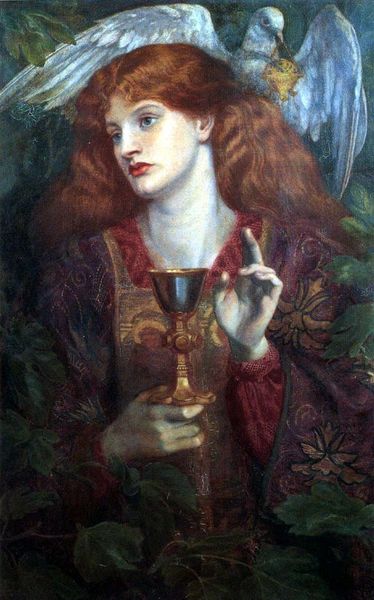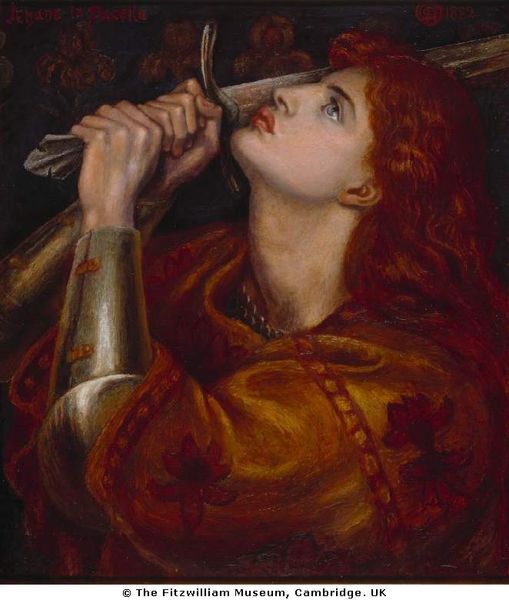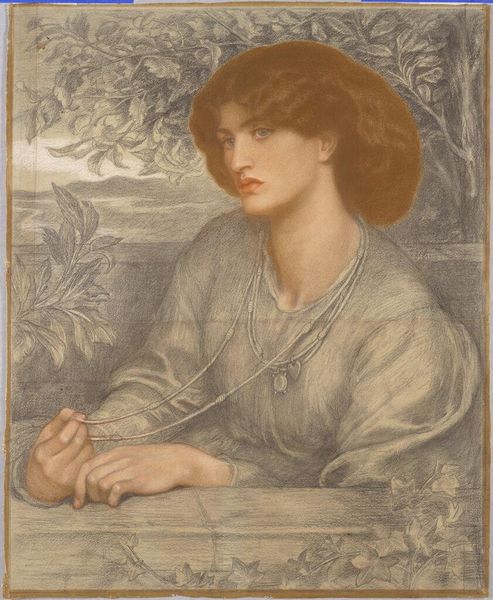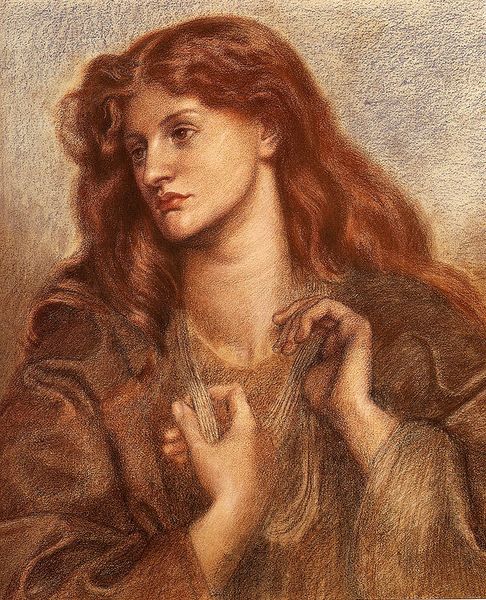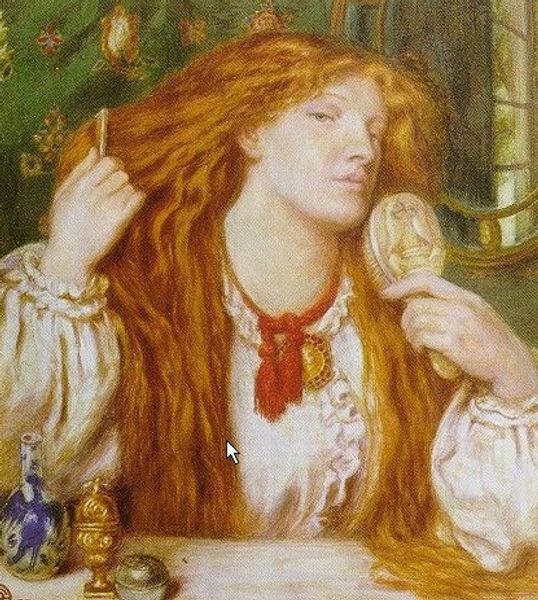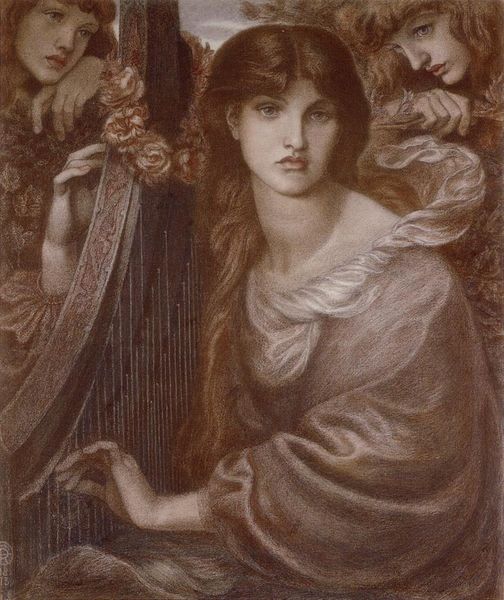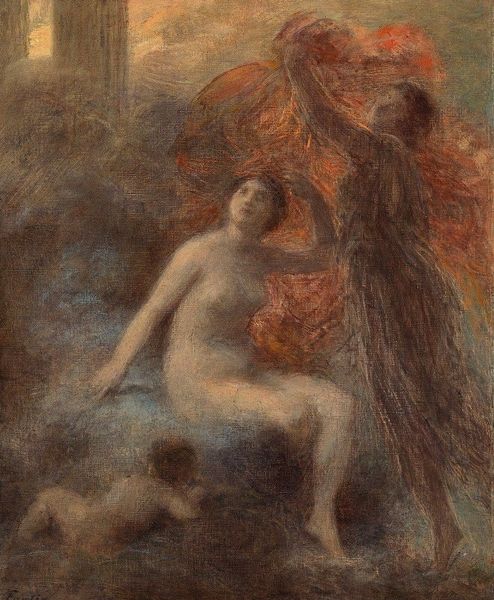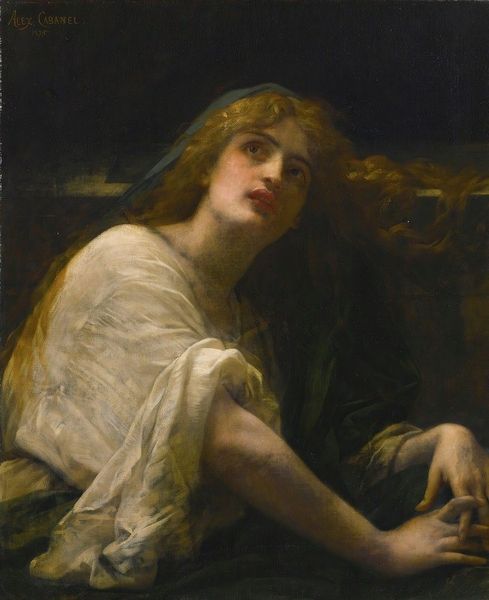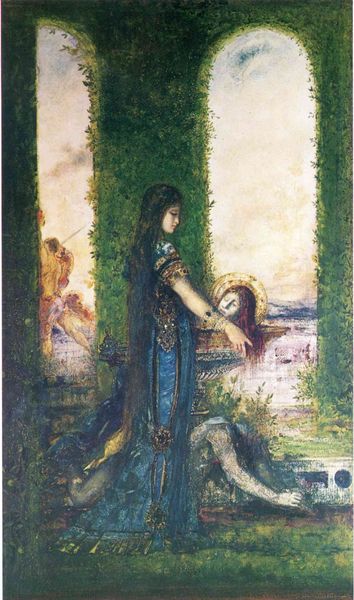
Dimensions: 71.2 x 55 cm (28 1/16 x 21 5/8 in.) frame: 101.6 x 83.8 x 6.4 cm (40 x 33 x 2 1/2 in.)
Copyright: CC0 1.0
This is one of several versions of Dante Gabriel Rossetti’s ‘Beata Beatrix’, meaning ‘Blessed Beatrice’. The Victorian artist completed this drawing around 1781, using watercolour and gouache on paper. Its ethereal look hides a tragic tale. Dante Gabriel Rossetti (1828-1882) is best known as the co-founder of the Pre-Raphaelite Brotherhood. This was a loose group of artists who prioritised ‘truth to nature’ and rejected the idealised images of the Royal Academy. As suggested by the name, the Pre-Raphaelites wished to return to the authentic arts which they thought existed before Raphael’s High Renaissance. Medieval revivalism was a key feature of Pre-Raphaelite art. ‘Beata Beatrix’ (1871) is a great example of the turn towards medieval imagery and inspiration. This work takes its subject from ‘La Vita Nuova’, a poem written by the 13th century Italian writer Dante. Yes, another Dante! La Vita Nuova introduces the figure of Beatrice, an Italian girl who Dante fell in love with. The poet was left heartbroken when Beatrice died. Here, Rossetti depicts Beatrice with her eyes closed and her face raised towards the heavens. A red dove, complete with a golden halo, perches on her arm. Doves traditionally symbolise peace and divinity, while the colour red might suggest love or death. Interestingly, Rossetti modelled the woman in this drawing after the artist Elizabeth Siddal (1829-1862). Rossetti and Siddal had married in 1860, just two years before her untimely death. By the time of this drawing, she had been dead for almost a decade. Have you noticed the white flower clutched in the beak of the red bird? What type of plant do you think it might be? The petal is commonly identified as a poppy. This might be a hint towards Siddal herself, who is believed to have died from an overdose of laudanum. Laudanum is a mixture of opium that can be derived from poppy seeds. This drawing represents a spiritual ideal of femininity. Rossetti draws a comparison between his own lost love, Lizzie Siddal, and a centuries-old tale of tragic heartbreak. The woman in the drawing emits an ethereal glow of light. It’s intended to remind us of heaven – suggesting the goodness and divine grace of the two women.
Comments
No comments
Be the first to comment and join the conversation on the ultimate creative platform.
